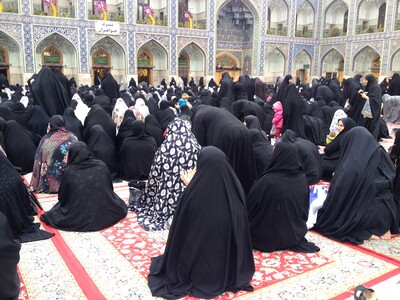
Mashad مشهد
When I finish this journey, more people will ask me what Iran was like than any other of my stops along the Silk Road. But I can’t tell you what Iran is really like. Many aspects of the country are confusing and challenging. None of my bank cards work, for example. As a woman I must have my head covered at all times in public, even in the car. I cannot access the BBC website, but I can read The Independent online. I cannot use Facebook nor YouTube, but local people all have apps to get around the official blocks. I cannot drive a motorbike, but I can drive a car. The cars are old, contributing to appalling pollution in the big cites, which disappear under smog mid-morning.
My phone doesn’t pick up any kind of signal other than wifi. I cannot drink alcohol. The portions of traditional food are always too large. I must wear a long coat that reaches half way to my knees at all times in public because I am female. The year starts mid-March, not January. The weekends are on Thursday and Friday. And they start their CE when the prophet Mohammed was 40, about 600 years after our year zero. Finally, the time is +3.5 GMT. I’ve never before been in a half hour country. More than any of the other countries I have visited, the Iranians want you to love their country. They are exceptionally proud of it, and they desire to share its magnificence with you. Women and girls of all ages want to talk to me, and a photograph with me is often requested.
I call room service to ask for a bowl of stew, which proves difficult, even though I speak very slowly. “I am sorry,” says the operator, “I have trouble understanding you. Your English is so different to what I am used to. You do not speak like our usual guests. Where are you from?” I laugh. “I’m English!”


